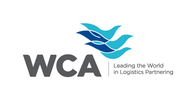

S30u—CTPAT for Drivers and Warehouse Personnel
Subscriber price: $35.00, Non-subscriber price: $52.00
Estimated total study time: 4 hours 55 minutes
![]()
One of the critical aspects of maintaining and sustaining the CTPAT security program is training. The education of employees is a vital component of the "people and physical security" focus area of the minimum security criteria (MSC). Training of personnel to recognize threats, foster awareness of vulnerabilities, and understand the important role each person plays in securing the supply chain is a requirement of the CTPAT program.
This basic-level course is designed to meet the CTPAT requirements for personnel who must understand, perform or otherwise comply with operational security measures. It is suitable for drivers and warehouse personnel regardless of the particular CTPAT type of participant category of their employer. It contains the 7-point, 17-point, and TTVV seal inspection.
We begin with the requirements for all CTPAT members. The course ends discussing the benefits, eligibility requirements, and specific minimum security focus areas and the categories that "must" be met including reporting and responding to security incidents and suspicious activity for drivers and other facilities personnel that handle cargo, seals and conduct Security and Agricultural Inspections.
According to MSC 12.1, security training must be provided to employees, as required based on their functions and position, on a regular basis, and newly hired employees must receive this training as part of their orientation/job skills training. This course is suitable for both initial and refresher training.
Introduction to CTPAT
CTPAT is an ongoing compliance effort consisting of mandatory security requirements that must be met based on certain types of businesses in the supply chain. Why do companies want to participate in CTPAT? In this lesson we begin to look at the specific requirements for participation and benefits based on business type.
(Estimated study time: 59 minutes)
- Introduction
- Threats that go Beyond Purely Commercial Concern
- Changing Methods and Targets as Governments Tighten Security
- Hijacking and Piracy of Conveyances
- Destructive Attacks Against Conveyances
- Theft of Dangerous Goods and Weapons While in Transit
- Unauthorized Insertion of Undeclared Items Into Shipments and Conveyances
- From Government Reaction to Pro-action
- Customs Trade Partnership Against Terrorism (CTPAT) is a Voluntary U.S. Security Program
- Foreign Suppliers, Transportation Carriers, and Supply Chain Service Providers Gain Increased Marketability as CTPAT Members
- General Benefits of CTPAT Participation
CTPAT Corporate Security
This lesson will cover the categories in the CTPAT minimum security criteria and begin with the focus area of Corporate Security applicable to all personnel.
(Estimated study time: 46 minutes)
- Introduction
- Minimum Security Criteria (MSC) Focus Areas
- CTPAT Corporate Security
- Security Vision & Responsibility
- Risk Assessment (RA)
- Business Partner Security
- Cybersecurity Requirements
CTPAT Transportation Security: Conveyance and Instruments of Internatonal Traffic
Conveyance and Instruments of International Traffic (IIT) Security focuses on the security measures required to protect containers and IIT packaging used in the shipment of merchandise in international trade. This section outlines the importance of securing these containers to prevent unauthorized access and tampering, which could pose significant security risks. It also details the systematic inspections that must be conducted to ensure the integrity of these containers and the procedures for reporting security incidents and suspicious activities.
(Estimated study time: 51 minutes)
- Introduction
- Conveyance and Instruments of International Traffic Security
- Conduct Inspections of All Conveyances and Empty Instruments of International Traffic Prior to Loading
- Inspections Prior to Loading
- Container and Unit Load Device (ULD) Security and 7-Point Inspection Procedures
- Trailer Security and Inspection Procedures
- Conveyance Security and 17-Point Inspection Procedures
- Inspect External Hardware on Conveyances and IIT Before Attaching the Seal
- Perform Proper Removal of any Visible Pest Contamination from Container or Conveyance
CTPAT Transportation Security: Seals, Procedural and Agricultural
This lesson will cover three of the categories in the CTPAT minimum security criteria focus area of Transportation Security; the criteria for securing conveyances, containers and instruments of international traffic using seals and by other methods, procedural and agricultural security.
(Estimated study time: 1 hour 2 minutes)
- Introduction
- Seal Security
- VVTT Process Followed to Check that High Security Seals are Properly Affixed
- Seal Verification Process
- Proper Way to Apply Seals
- View Verify Tug Twist Seal Inspection Method
- Procedural Security
- Cargo Areas Kept Free from Visible Pest Contamination
- Highway Carriers Mitigate the Risk of Collusion Between Employees
- Internal Organizational Vulnerabilities from Employees and Others
- Espionage and Sabotage
- Unauthorized Access to Information; Key Issues
- Security Breaches Due to Poor Training & Attention to Detail
- Other People in Contact with Your Fellow Employees and Facilities
- Challenging and Removing Unauthorized Persons
- Agricultural Security
- Non-Manufactured Wood Packing Materials (NMWP)
CTPAT People and Physical Security for All Personnel
This lesson will cover the four categories in the CTPAT minimum security criteria focus area of people and physical security. This encompasses physical access controls, physical security, personnel security and what brought you all to this training, education, training and awareness.
(Estimated study time: 40 minutes)
- Introduction
- Physical Security
- Physical Access Controls
- Personnel Security
- Employees
- Visitor Controls
- Education, Training and Awareness
- Summary of Required Security Measures for All CTPAT Members
CTPAT Security Measures Specifically for Drivers and Warehouse Personnel
Security breaches and threats are everyone's responsibility. This lesson covers cybersecurity threats, media use and disposal, and how to recognize, respond to and report possible security threats.
(Estimated study time: 38 minutes)
- Introduction
- Relevant Roles and Benefits of Transportation Intermediaries Participating in CTPAT
- Basic Security Objectives
- Situational Reporting
- How to Recognize and Respond to Security Breaches and Possible Threats
- Everyone's Responsibility
- Recognizing and Reporting a Suspicious Person, Activity, or Shipment
- People Who May Be a Security Concern
- Cargo and Situations that May Be a Security Concern
- Responding to a Possible Security Threat
- Summary of Security Measures that Must be Undertaken by Drivers and Warehouse Personnel